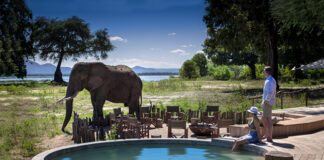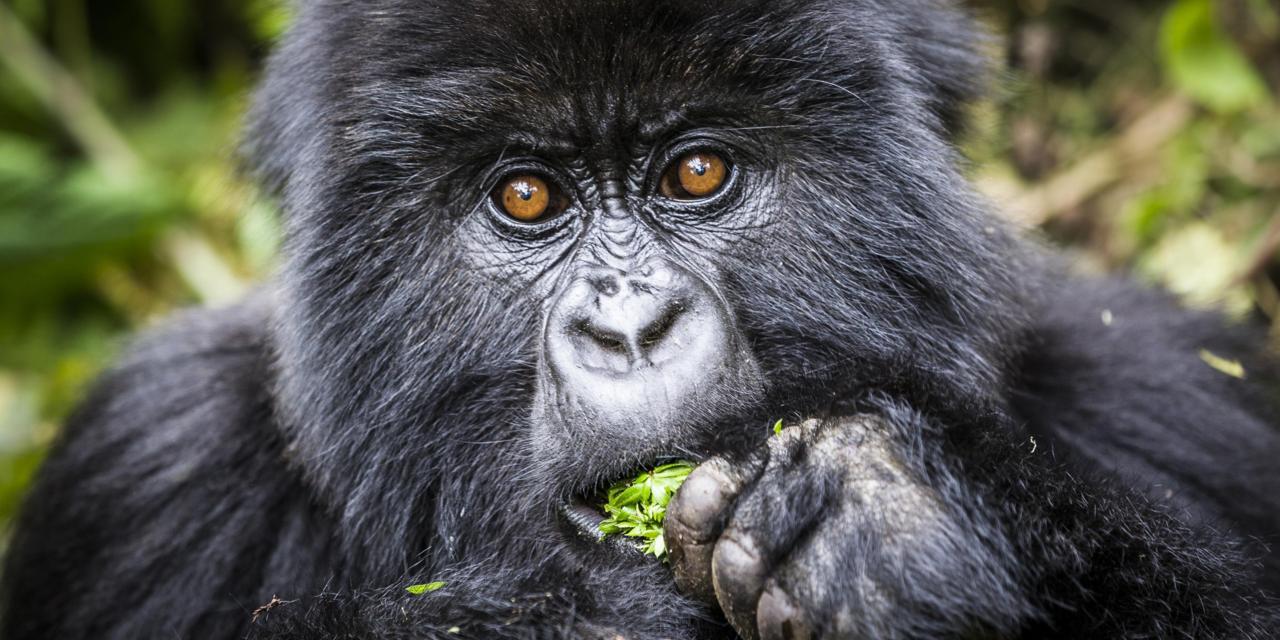Hwange National Park
Hwange National Park is the largest game reserve in Zimbabwe. Founded in 1928 as a game reserve, it did not become a national park until 1930. It is located on the main road between Bulawayo and Victoria Falls, near the border between Zimbabwe and Botswana.
It is approximately the size of Belgium (5 657 square miles) and has the second greatest amount of mammals out of any other national park in the world.
It has relatively few tourists in comparison to other Zimbabwean attractions and this allows the wildlife to continue prospering. It is ideal for safaris and viewing of sub-Saharan wildlife and is also one of the largest elephant sanctuaries in Africa.
400 species of birds live in Hwange National Park so it is another place with ample opportunity for bird watching.
The economic crisis is having an effect on the park. It is very reliant on income from tourists as it is not supported by the treasury of the government. When water is low, it is difficult to transport water pumps and renew the water supply due to the fuel crisis.
The waterholes are supplied by borehole water and few of the pumps are working. This creates problems as water is vital to the survival of animals, especially the 30 000 elephants, each of which needs to visit a waterhole twice a day.
Poaching is also a problem in Hwange. Snares are laid by poachers and animals that get caught in these suffer for days and die slowly.
The decline in tourism and lack of revenue makes it unviable for anti-poaching patrols to complete their jobs successfully and to implement better preventative measures.
The Eastern Highlands
The Eastern Highlands include the Nyanga (northern range), Vumba (central range) and Chimanimani (southern range) mountain ranges, as well as Mount Nyangani, the highest mountain in Zimbabwe (8504 ft.). These range from the eastern border between Zimbabwe and Mozambique.
The climate in the highlands is much cooler than that of the rest of Zimbabwe and provides a refreshing break from the usual heat of Sub-Saharan climate. The landscape is so different from anything else in Zimbabwe, that it is often compared to the mountains of Scotland or Ireland.
The mountain ranges are ideal for hiking and mountaineering and they feature beautiful rivers and waterfalls, such as Mtarazi Falls, the second highest waterfall in Africa. They are also the habitat for the leopard, blue duiker and samango monkeys, which are not found outside of the Eastern highlands.
The Nyanga mountain range is the most developed out of the three and therefore attracts the most tourists. In its center is Nyanga National Park, founded by Cecil John Rhodes.
This park is not primarily a game reserve but several species of antelope can be found there and the rich bird life makes it perfect for bird watching.
Lake Kariba
Lake Kariba is a large man-made lake in the north of Zimbabwe. It was built mainly to provide hydroelectricity to Zambia and Zimbabwe. Construction was started in 1955 but it was not completed until 1977 due to high economic costs.
The building of the dam unfortunately displaced about 27 000 of the native Tonga people and Operation Noah, the moving of 6000 species of animals and birds threatened by the rising waters, had to be initiated in 1960 to prevent the extinction of these creatures. Approximately 68 construction workers died while building this dam.
Now Lake Kariba is about 140 miles long and 20 miles wide. Beautiful sunsets and diverse wildlife contribute to its allure to tourists, as well as houseboats trips and fishing opportunities, which make it an ideal location for relaxation and a good time.
The Zimbabwean side of Kariba is a designated recreation and national park, which guarantees wildlife viewing opportunities and spawns conservational efforts to save endangered species, for example, the black rhinoceros.
The tragedies during construction gave rise to legends from the native people, such as the legend of the Nyaminyami, which add to the mysticism of the area. Tourist curiosity about such cultural legends also encourages visits.
Victoria Falls
Victoria Falls is one of the seven natural wonders of the world and, as a result, it is the most popular tourist attraction in Zimbabwe.
Western interest in the area started in about 1900 when Cecil John Rhodes decided to build a railway bridge over the Zambezi River at a location where the spray from the waterfall peppered the passing trains. During the British colonial rule, it piqued the interest of tourists from the west.
These magnificent falls are one of the largest in the world. Even with the economic, social and political crises, it remains a more popular destination than other sites.
The opportunity to participate in activities such as, white water rafting and bungee jumping, help to draw tourists to this renowned spot.
Much of Zimbabwe’s diverse wildlife and birds can be found around this location, as well as a variety of river fish which make it an ideal location for sport fishing.
Victoria Falls is on the border between Zimbabwe and Zambia and is shared by both countries. Before 2000, Zimbabwe welcomed more tourists as its resorts were more developed.
With the start of the crisis in 2000, tourists wishing to see the waterfall and participate in the activities that it provides, prefer to visit the Zambian side. Now Zimbabwe has fewer visitors to the falls than Zambia.
Great Zimbabwe
Great Zimbabwe is the remains of an ancient southern-African city. Zimbabwe is believed to be named after this location which means “house of stone”. It was the center of the ancient Monomotapa Empire, which ruled over both Zimbabwe and Mozambique.
This historical and cultural attraction is made up of great stones, which span over 200 square miles.
Work on the city is believed to have begun during the 11th century and was completed sometime during the 15th century. These are among the oldest and largest structures to be built in Southern Africa.
The first Europeans to visit the site were the Portuguese in the 16th century. In 1876 Adam Renders “rediscovered”them and they became well known to western Europeans.
Colonial Europeans found it difficult to believe that Africans built such a structure and therefore some attributed something mystical to the ruins, while others believed it had been built by Chinese or Arabs.
Recently in the 1980s, the city was confirmed to be built by the native Africans and this became widely accepted. Unfortunately not much is known about the pre-colonial history as this great civilization did not keep written records.
The mysticism plays a role in tourism, with fortune tellers and witch doctors setting up camp in the heart of Great Zimbabwe. The Conical Tower and Girdle Wall are perhaps the most amazing and intricately built structures in this ancient city and the best known by tourists.
It is a great spot for learning the ancient culture of Southern Africa and to enjoy a sunny day while having a picnic. Mischievous monkeys play in the trees and sometimes steal treats from the picnicking tourists when they turn away.
Harare
This is the capital city of Zimbabwe, a cosmopolitan and culturally vibrant place. The National Gallery here has one of the finest displays of African art in the continent and the Queen Victoria Museum houses fine anthropological exhibits from the area.
The busy Mbane Musika market and bus terminal is one of the greatest open-air markets in Africa.
Bulawayo
This is the second largest city in Zimbabwe but it has curiously managed to retain a 1960s small-town America ambience.
Huge tree-lined boulevards covered in flowers during spring watch over the town’s prime attractions. Places to visit are the National Museum (one of the best and most comprehensive on the continent) and an equally good Railway Museum.








